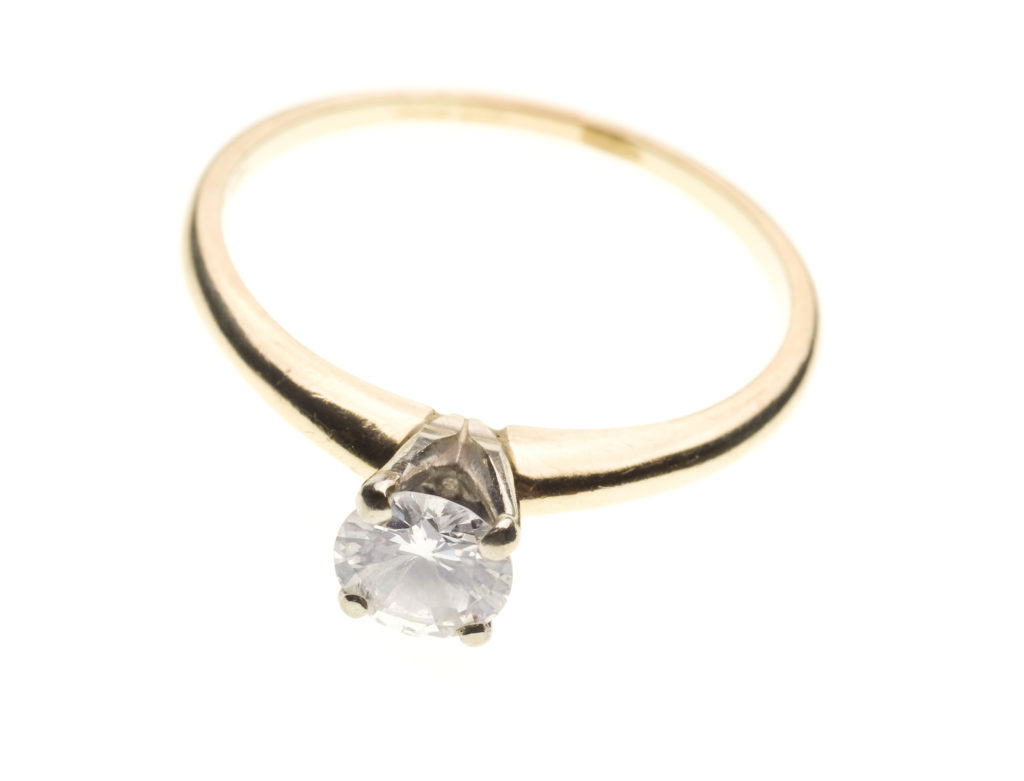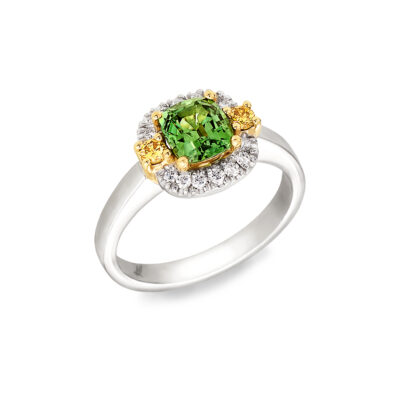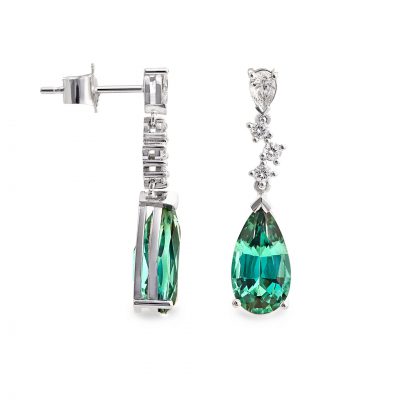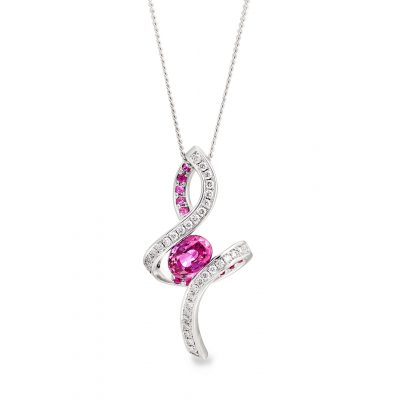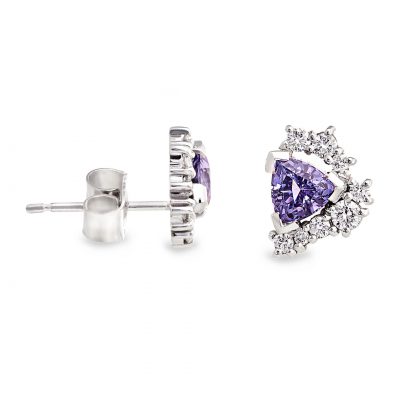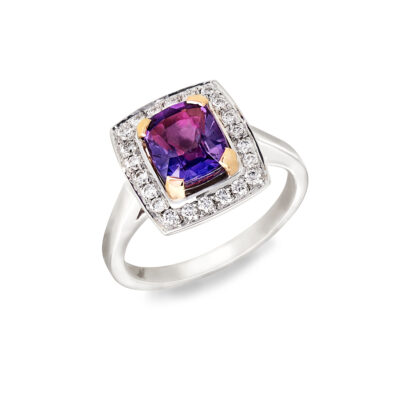The giving and receiving of an engagement ring is a serious milestone in your relationship. Although ancient Egyptian mummies have been discovered with metal bands on the third finger of their left hand, the first recorded proposal with a diamond ring was in 1477, and by the end of the 19th century, engagement rings set with the best gemstone that the groom could afford were a regular sign of a couple’s intent to marry. However, just as with fashion, trends in engagement rings have varied drastically over the years and engagement rings are no exception.
1900’s
At the start of the 1900’s, the majority of brides-to-be that received engagement rings were members of the upper class. The most popular style was a simple band of gold, set with a European cut diamond or similar precious stone.
1920’s
Engagement rings in the 1920’s were reflective of the Edwardian style. The bands were larger and designed with intricate and ornate filigree metalwork that looked very much like lace. The stones were still predominantly round, European cut and added an elegant sparkle to the extremely glamorous design.
1930’s
By the 1930’s engagement rings had evolved to embrace larger, geometric, art deco styles that were popular in the period. Although round stones were still the most popular, they were set in unusual ways and often surrounded by other semi-precious stones.
1940’s
Metal rationing during WWII meant that engagement rings were often made of lower quality metals, but 1947 saw the rebirth of the diamond as the premier choice of stone for engagement rings thanks to a marketing campaign by South-African-based cartel De Beers Consolidated Mines Ltd (now known as De Beers). Their slogan ‘a diamond is forever’ marketed diamonds as an unbreakable symbol of love, highlighted them as worn by celebrities and the elite classes, and pushed the popularity of diamonds off the scale for the remainder of the century.
1950’s
White gold and platinum made a reappearance in the 1950’s, with round solitaires continuing their reign of popularity. This time however, side stones added to the wow-factor and reflected much of the glamour that was seen on the big screen during this decade.
1960’s
The 1960’s saw the emergence of a variety of new shapes of stone. Pear marquise, heart-shaped and emerald cut diamonds were in abundance, as well as some elaborate settings all within predominantly yellow gold bands.
1970’s
Yellow gold continued to be the metalwork of choice for engagement rings in the 1970’s, but designers chose to ramp up the glitz and quantity almost always took precedence over quality. Large radiant cut diamonds surrounded by a whole heap of smaller gemstones were very popular, as were flower-shaped clusters.
1980’s
The 1980’s saw white gold and platinum becoming just as desirable as yellow gold again. Round stones maintained their popularity, often enhanced with rectangular baguettes on the sides. However, the 12-carat oval blue Ceylon sapphire, surrounded by 14 solitaire diamonds and set in 18-carat white gold worn by Princess Diana when she became engaged to Prince Charles set an immediate trend and coloured stones with similar settings soon flew out of jeweller’s stores and onto the fingers of the upper and middle classes.
1990’s
Radiant-cut diamonds regained popularity in the 1990’s, and many were paired with triangular shaped stones on either side of them, creating a rather geometrical and modern style. White gold and platinum bands complimented the look.
2000’s
Taking a nod from the style of the eternity ring, in the 2000’s princess cut diamonds on a white-gold or platinum band of smaller stones was the classy yet bling-without-being-brash, engagement ring that grooms-to-be were seeking.
2010’s
So far this decade we have coloured stones making a serious comeback thanks to their appearance among celebrity couples. The Duchess of Cambridge is now wearing Princess Diana’s famed sapphire, and other notable figures have made yellow and pink diamonds, rubies and emeralds extremely sought-after. There are no rules when it comes to the gold, although white-gold and platinum are still viewed as more contemporary when it comes to styling.
The Future
Notable public figures and celebrities seem set to inspire some of the trends in engagement rings in the future, but there is one underlying desire that overshadows them – the need for uniqueness. Couples of today are seeking engagement rings that profess their love in a completely unique way and one that reflects their style and personality. Whether it is a twist on a classic design, an unusual choice of gemstone or a custom-created bespoke jewellery piece, we can expect to see an entire plethora of contemporary, vintage and blended engagement ring styles over the coming years.
